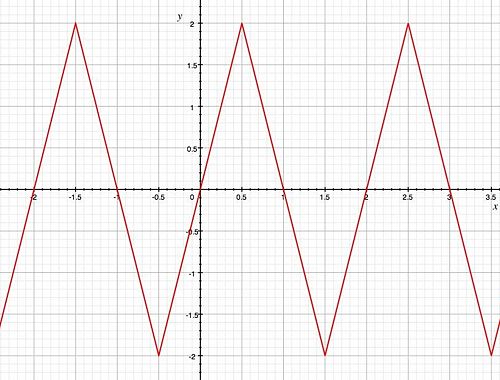Laplace Transform of a Triangle Wave: Difference between revisions
Jump to navigation
Jump to search
Michaelvier (talk | contribs) No edit summary |
Michaelvier (talk | contribs) No edit summary |
||
| Line 3: | Line 3: | ||
This article explains how to transform a periodic function (in this case a triangle wave). This is especially useful for analyzing circuits which contain triangle wave voltage sources. |
This article explains how to transform a periodic function (in this case a triangle wave). This is especially useful for analyzing circuits which contain triangle wave voltage sources. |
||
==Define F(t)== |
|||
<math>m1=\frac{2+2}{.5+.5}=4</math> |
|||
<math>m2=\frac{-2-2}{1.5-.5}=-4</math> |
|||
So, |
|||
<math>F\left( t \right)=\left\{\begin{array}{cc} 4t & -.5\leq t<.5 \\ -4t+4 & .5\leq t<1.5 \end{array}\right |
|||
</math> |
|||
==Author== |
==Author== |
||
Revision as of 18:57, 19 January 2010
Introduction
This article explains how to transform a periodic function (in this case a triangle wave). This is especially useful for analyzing circuits which contain triangle wave voltage sources.
Define F(t)
So,
Failed to parse (syntax error): {\displaystyle F\left( t \right)=\left\{\begin{array}{cc} 4t & -.5\leq t<.5 \\ -4t+4 & .5\leq t<1.5 \end{array}\right }


